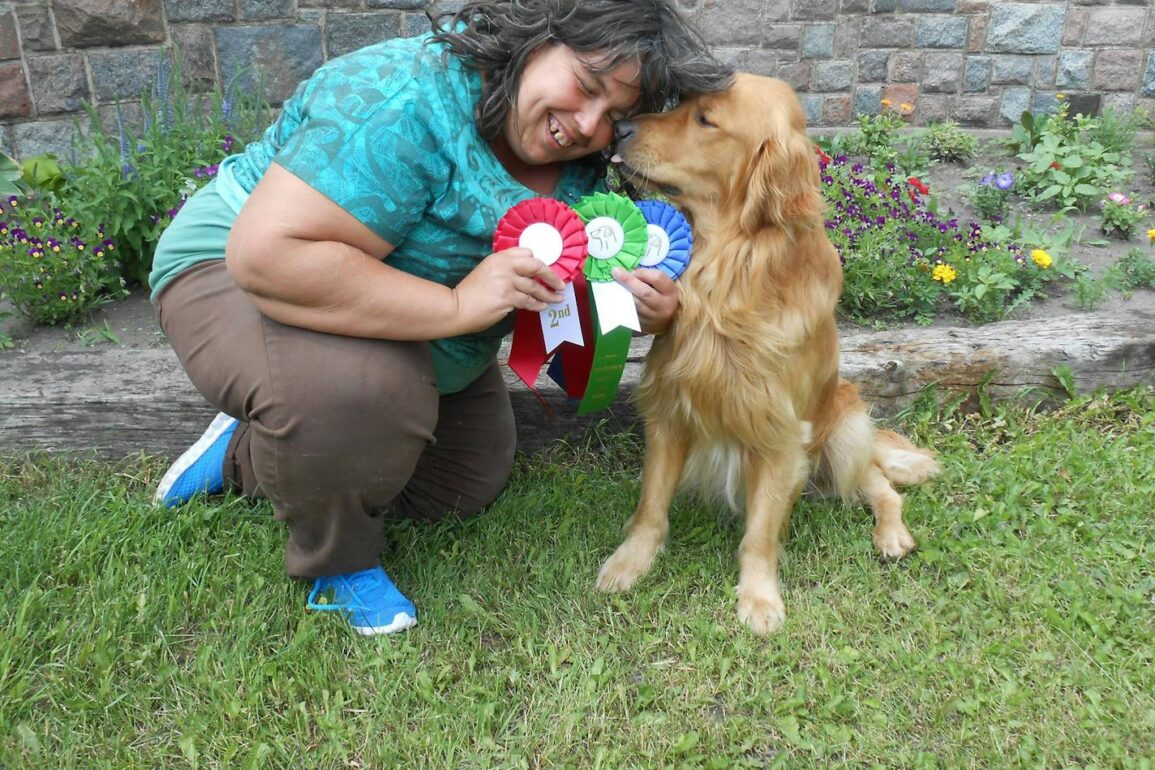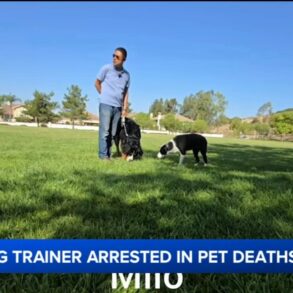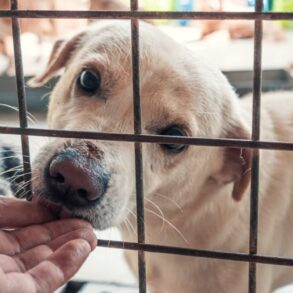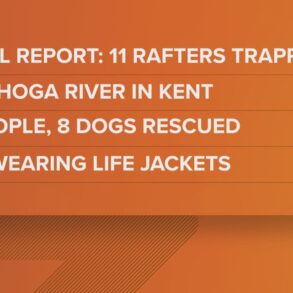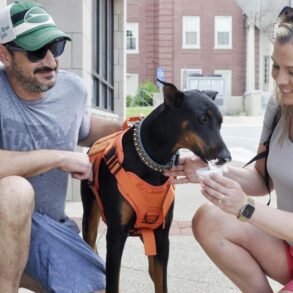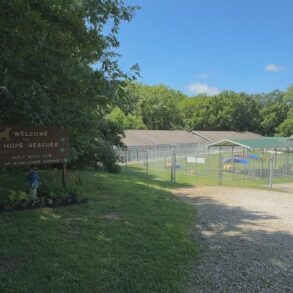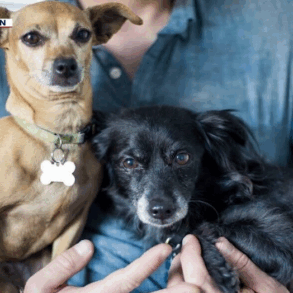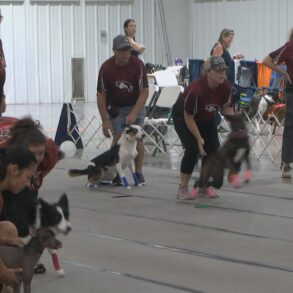Preferences for families with a fence will weed out those who can’t afford to build one, he said. He’d like to see the industry put more resources into supporting families to keep their pets when vet bills and other costs become out of reach.
“Almost 99% of the animal welfare organizations in this country are focused on neglect and cruelty,” even though intentional abuse or neglect is not the norm, he said.
Sharon Nordrum, who lives in the north-central Minnesota town of LaPorte, said over the years caring for animals, she has encountered blatant bias. An enrolled member of Red Lake Nation, she said a couple of Minnesota-based rescue groups seemed willing to re-home a pet with her until they learned she was Native American. One told her she didn’t want the dog “going to a Native home,” Nordrum recalled.
Sharon Nordrum held ribbons alongside her late golden retriever, BaWaaJige, who competed in rally, obedience, agility, and other events. BaWaaJige was also a therapy dog and worked with autistic children. “There isn’t a day that goes by that I do not miss him,” said Nordrum. (Provided/Sharon Nordrum)
Strays are more common on reservations, but Nordrum doesn’t live on one. All of her animals are spayed or neutered, and she’s won numerous awards in dog shows and sporting competitions.
Ironically, a breeder once gave her a discount on a Lab puppy because he knew of Nordrum’s reputation working with dogs. She purchased that pup, Valor, who now boasts dozens of titles in scent work and other categories.
“But I’m not good enough to adopt a dog from a shelter,” Nordrum said.
This post was originally published on this site be sure to check out more of their content.




